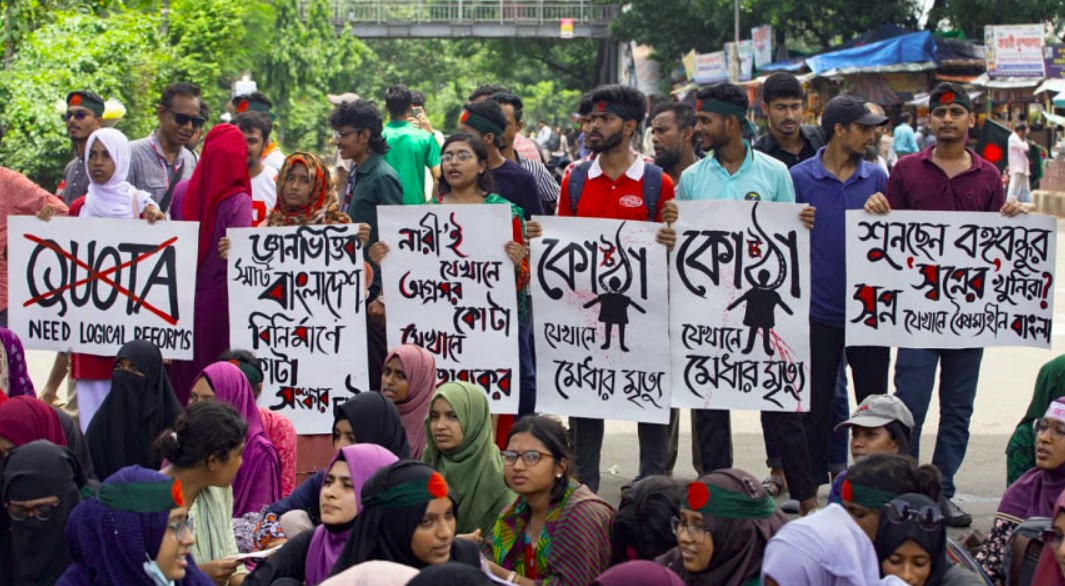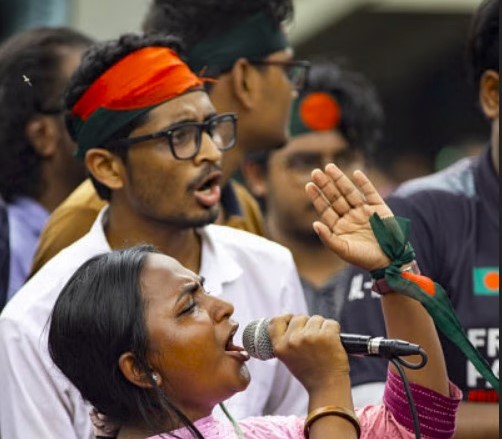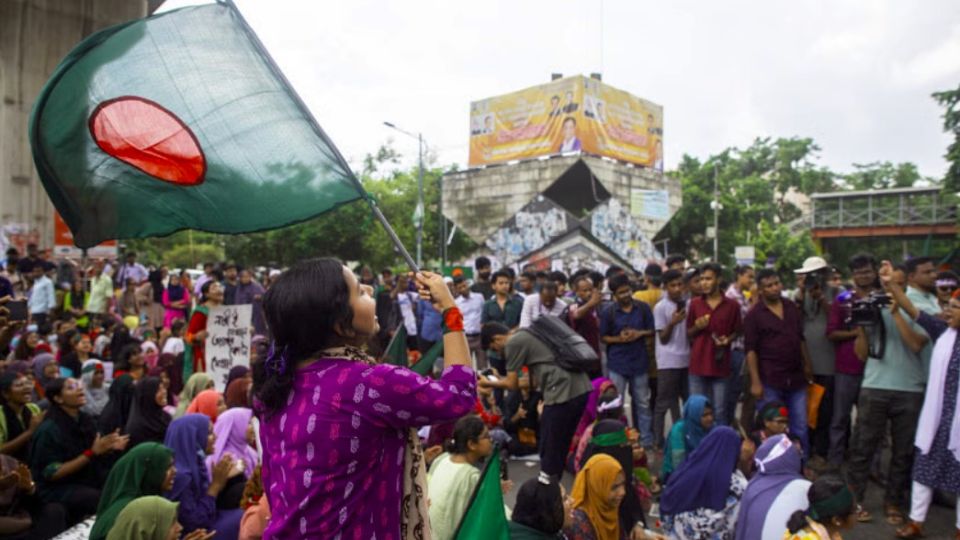July 12, 2024
DHAKA – The year 2018 saw a surge in student protests that resonated across the country. It began with the demand for quota reform, and, in the following months, the Road Safety Movement took place. The year was full of potential, as the wind of change appeared to sweep across the nation. Students, with their youthful zeal, flooded the streets, their voices echoing the plea for justice and reform. However, their hard work proved to be futile. Our roads, despite the safety movement, are still unsafe. And the quota system, which was abolished, not reformed, was re-established earlier this year.
On October 3, 2018, the Bangladeshi government abolished the quota system for government job recruitment in grades nine through thirteen. On January 20, 2020, the Ministry of Public Administration authorised a proposal to eliminate quotas on direct appointments to eighth grade or above positions in government employment. The Bangladesh Public Service Commission (BPSC) agreed to follow these changes in their recruitment procedures.
However, on June 5, 2024, the High Court ruled that the cancellation of the quota system, including the 30 percent quota for freedom fighters in government jobs, was illegal. This ruling was upheld by the Supreme Court’s Appellate Division on July 4, 2024, reinstating the quota system for these posts.
Since the beginning of July, students at several public universities, such as Dhaka University (DU), Jahangirnagar University (JU), and Jagannath University (JnU), have staged large-scale protests calling for the overturning of the High Court’s ruling to reinstate the 30 percent quota for the descendants of freedom fighters in government employment. Their protests have been anything but discreet; they have orchestrated roadblocks, held impassioned rallies, and leveraged the power of social media to broadcast their grievances to a wider audience.

The question that arises in this storm of discontent is what the students who had quota privileges think about the system. Are they silently wrestling with a sense of loss, or do they perceive the movement as a necessary stride towards a more egalitarian society?
Around 56 per cent of government employment is earmarked for candidates from various quotas. 30 percent went to the children and grandchildren of Freedom Fighters, 10 percent to women, 10 percent to district-based allotments, five percent to members of indigenous communities, and one percent to people with physical disabilities.
Waseka Rahman*, a fourth-year DU student, says, “There is no logic behind the current system. If 56 percent of seats are allocated by quotas, aren’t we doing a disservice to the majority of those who do not have them? Intellect should be a top priority. Why should the grandchildren of liberation fighters enjoy quota privileges? There should be no discrimination in government job applications. The quota ratio should be justifiable.”
After seeing how the freedom fighter quota affects other students, students who leveraged it during the admissions period are now speaking out against it. “I used the freedom fighter quota, but I didn’t know any better at the time. I decided to seize the chance while I could. I still did not get to study the subject I wanted. If I had the chance today, I would not deprive someone of a well-deserved opportunity,” Waseka adds.

Upon talking to Abrar Ahmed*, another student who utilised the freedom fighter quota and who has now graduated from the Department of Economics at DU, he states, “It is extremely important to change the quota system now because the predetermined percentage is not even filled.” This demonstrates how demoralising the current quota system is for the students who cannot utilise it.
Talking to another student who chose not to use the indigenous quota during the admissions season gives a different perspective on this debate. Hritu Roy, a fourth-year student majoring in International Relations at DU, says, “Being in Dhaka since childhood, I am privileged compared to most people in my (Chakma) community. Even though there is a quota facility during university admission, I did not use it, and I think people like me who had a privileged upbringing should not use quota.”
While the movement may be perceived as students advocating for the entire abolishment of the quota system, that is not the case. At its core, the protests are aimed at reforming the current system while keeping fair allocations.
Khingmokay Marma, majoring in Mass Communication and Journalism at DU, speaks about the need for indigenous quotas. She says, “We need indigenous quotas because we are lagging behind. If someone from an indigenous community gets a government job in a higher position with the help of quota, the person may represent their community, encouraging others to come forward for higher education. This also helps guide the future generation. Since the abolishment of the quota system in 2018, there has been no indigenous BCS cadre except a few, due to which many are losing interest in higher education. I have heard such things myself: What will happen after studying so far? There is no possibility of becoming a BCS cadre; it is better to get a job after HSC.”

Khingmokay emphasises how the empowerment of one indigenous individual could cause a ripple effect; she says, “When someone is in a good position, they are better able to comprehend community issues and communicate them to decision-makers. A person who has been deprived of benefits can relate to the hardships faced by minorities. To discuss issues like land possession, evictions, and the dearth of quality teachers and educational institutions, we need representation. So, I believe a five percent quota for indigenous people is fair.”
Hritu Roy shares the same sentiment; she states, “In higher education, it is important to have minimum quota facilities only for minorities and check whether the right people are availing of them. In the Chittagong Hill Tracts and in most government jobs, there is a huge disparity in the recruitment of indigenous people. Hence, it is necessary to ensure transparency in recruitment based on merit, along with the elimination of the quota system. Otherwise, citizens will be deprived of their fair rights.”
Conversations with the interviewees reveal a unanimous call for reformation. Among the protestors is Waseka Rahman, who emphatically supports the movement, stating, “Quotas for indigenous populations, the physically impaired, and women should be maintained.”

The students’ demands centre around ensuring that the quota system is restructured to benefit those who genuinely need support, such as marginalised communities. They argue against a system that perpetuates injustice and discrimination, advocating for a fairer approach that aligns with the principles of equity and social justice. The underlying sentiment is clear: while reform is necessary, it must be executed in a way that upholds fairness and inclusivity.
In this crucible of student activism, we are reminded of the essence of democracy: an ever-changing debate that must be responsive to its people’s needs and ambitions. The students’ demands for reform are more than just calls for policy changes; they are also fundamental statements of democratic values, challenging us to envisage a system in which inclusion, equity, and merit may coexist peacefully.


